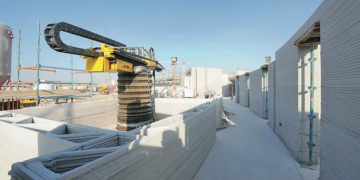The facades of buildings are especially exposed to atmospheric phenomena and pollution, since they are constantly exposed to precipitation and dust. In this regard, periodically the need for their cleaning and updating. The process of cleaning requires special attention, especially for historical objects.
The selection of methods for repair work depends on the type of surface and, therefore, the restoration process should be preceded by a detailed examination that determines the type and degree of destruction of the facade, thickness and type of pollution. Such an examination allows you to determine the size and nature of restoration work. The easiest way to remove pollution from facades is to flush with water under pressure. Water dissolves and removes dirt and plaque. The action of hot water is more intense and effective, and significantly reduces the treatment time. Hot water also allows you to remove fat pollution. Too hot water, however, can lead to severe deformation of the outer layer and, as a result, to the appearance of cracks.
Cleaning the facades of buildings is a fairly laborious process that requires accuracy and consumption of a large amount of water. In addition, water partially penetrates the wall, and with it they can penetrate into the depths of the walls and harmful substances dissolved in water. Therefore, in some cases, a different cleaning method should be used – dry.
The dry method involves cleaning the surface of the facades with a stream of abrasive material supplied using compressed air, which tears off a thin layer of surface containing pollution from the facade. Depending on the type and condition of the surface, as an abrasive, quartz sand, glass dust or marble, as well as sodium powder carbonate is used.
In some cases, it is rational to use the combined method of wet and dry cleaning.










